5/ The Modern Movement in Europe and its influence in SpainNouvel article
Muchos, por ejemplo, tienden a no reconocer un valor artístico a la arquitectura moderna, pretextando que ésta ha roto el puente que la unía a todo aquello que, hasta ayer, constituía la auténtica característica de su lenguaje; observación errónea por cuanto nuestra arquitectura no es otra cosa que la continuación de la del pasado*Many, for example tend not to recognise the artistic value of modern architecture, claiming that it has broken the bridge that joins all that which, up to yesterday, constituted the true nature of our language; an erroneous observation in as much as our architecture is nothing more than a continuation of the past..
(DORFLES, 1957, pp.128-129)

Elena Roig Cardona is Architect (Universitat Politècnica de Valencia). Master of Arts in Philosophy (the Open University U.K.), she is PhD candidate at the Jean Monnet University (Lyon-Saint-Etienne, France).
When we talk of heritage, there are few who would question the wisdom of conserving and maintain “old” buildings, as their history and past are still very present in our memory. However, that willingness to conserve grows weaker or is of less importance the closer we get to our own times. The events of our recent history are weaker or what amounts to the same are not so strongly engraved in our memories. Paradoxically, then, we could say that our past is more present in our memory than our own present.
We can see this very clearly in architecture. Although today we are getting used to seeing buildings with large panes of glass, with simple cubic forms and virtually devoid of all decoration, it was the architects at the beginning of the 20th century, the first possibly being Adolf Loos, who were pioneers in proposing this new architectural language.
To be able to explain where the architecture we know today comes from, we have to understand it and recognize its history, the moment when this architecture that emerged in Europe at the beginning of the 20th century, appeared and the reasons that made it possible, as well as its development right up to the present day.
The aim of this article is to explain the reasons for the development of what we know today as the Modern Movement in architecture. To do so, I shall begin the article with a brief exposé of the historical background that led to the development of this type of architecture and then go on to describe its birth in Europe. Here we shall see the first examples of that type of architecture, which also arrived in Spain during the first quarter of the 20th century. The complex situation of the 1930s, both in Europe as a whole and in Spain (Civil War in Spain, World war II in Europe) meant that the focus of the further development of that style of architecture shifted then to the Nordic countries. In the 1950s with the wars over, modern architecture reached its zenith, but at the same time began its decline. I shall end the article by discussing the influence that the Modern Movement had just after the Civil War and how Spanish architects were able to assimilate its theories in order to reformulate them from their own and personal perspectives.
Introduction
Often, when speaking about heritage and architecture, what normally comes to mind are buildings from the past, buildings like those of Brunelleschi, Bramante or Michelangelo, buildings from the Renaissance, Baroque or Neoclassical periods.
We are very used to seeing them, very familiar with them and especially with their elements or components, such as the Greek-style columns, the domes, friezes and balustrades.
Figure 1. San Francesco di Paola basilica, Naples, 1817-1824
For about 500 years or more, approximately from 1400 to 1900, architects and builders were using more or less the same elements over and over again. Characteristics may have changed little, but generally speaking, they were using classical elements and constructing buildings mainly out of stone and wood, depending on whether the building was of a noble nature or, on the contrary, was designed for a more everyday common use. This is immediately visible in buildings from the Renaissance to the Neoclassical period. From the late 19th century onwards, however, something happens. Consider, for instance, the change in style that took place when Modernism, Art Nouveau, etc. arrived, clearly visible in the buildings of Gaudí, and other Modernist buildings in Valencia or Barcelona, the buildings by Mackintosh in Scotland and all those from Victor Horta in Belgium or Otto Wagner in Austria. Those buildings appeared at the end of the 19th century, and 30 years later, Le Corbusier built the Villa Savoye near Paris.
What happened? Why that change? How did it come about?
If we want to understand the Modern Movement we have to go back to the Industrial Revolution. Things changed from around 1750 and nothing would ever be the same again. Work, the rhythm of life, and lifestyle in general … everything changed. People moved from the countryside to the cities; urban planning gradually became an essential science and new building methods were required to house that huge influx of people, as well as the simultaneous growth in population due to advances in medicine. Large-scale production of steel, concrete and glass became available and communication and transport systems improved. Bridges were now built of steel, and all three, concrete and glass and steel were introduced into the field of construction. New buildings linked to the new demands of urban life, such as hospitals, schools, Town Halls, etc. were built.
England, in the 19th century, was the leading industrial power in the world, that revolution having begun there. At the end of that century, William Morris, a qualified architect and textile designer, was deeply concerned about how industry was threatening art (arts and crafts, handmade things) and so became an inspiration for the Arts & Crafts Movement, aimed at preventing the decline of the arts in general.
At that particular time, Germany had started to challenge Britain as the number one industrial power in Europe. In contrast to the British, who had separated art from industry, the Germans were interested in the relationship between art and industry and in 1907, the Werkbund – the Association of German Craftsmen- was set up to investigate the new possibilities of combining art with industry. This idea was so original and innovative that many years later other European countries founded their own Werkbund (Switzerland, Austria, and others; and even England in 1915).
However, with the outbreak of the First World War, the German Werkbund had to close down.
Once the war was over, Walter Gropius, a German architect, revived the idea of the Werkbund and in April 1919, founded one of the most influential art school ever, Das Bauhaus.
Finalmente, el 12 de abril tuvo lugar el nombramiento de Gropius como director de la Escuela, con nombre y programa nuevos. Con ello inauguró, con un ceremonioso acto, la más cuestionada y moderna escuela de arte de su tiempo (Finally, on 12th April Gropius was named director of the School with the new name and programme. So began, in a ceremonial event, the most controversial and modern school of art of its time). (Droste, 1993, p.7)
The Bauhaus was very much influenced by the avant-garde movements of that period, including Supremacism, Surrealism, Expressionism, but especially Neoplasticism and Cubism. If Neoplasticism was responsible for laying the bases for working with abstract planes and purist rules, cubism broke the spatial concept of a single point of view, so overcoming the static view that had determined all art undertaken up till that time, especially architecture.
As mentioned earlier on, industry changed people’s way of live and society had new requirements. The Bauhaus, using the recently developed industrial materials of steel, wood, glass, concrete, and later plastic, created and designed a wide range of everyday objects that could be produced on an industrial scale. Indeed, it is often said that design was invented at the Bauhaus. Whatever the truth, it certainly had a huge influence on graphic design was enormous.
Although the Bauhaus was not exactly the place where the Modern Movement began, given that this architectural renewal movement received a number of important contributions that make it difficult or even impossible to point at a specific or birthplace or cultural environment, it is true to say that the leading exponents of the Modern Movement had some kind of relationship with it. Gropius and Mies van der Rohe were directors of the school at different periods, and figures such as Le Corbusier, Behrens and van Doesburg also were at different times linked to it. This is why the Bauhaus is often referred to as the cradle of the Modern Movement.
The Modern Movement occurred in many different parts of Europe around the same time, influenced by the simple forms of cubism and Neoplasticism’s system of planes and lines, and the new needs of society, so encouraging enthusiastic experimentation with the new, expressive materials, such as reinforced concrete.
Architects such as Walter Gropius, Mies van der Rohe and Le Corbusier are known as the first generation of the Modern Movement. Between them, in the 1920s, they revolutionized the world of architecture by building with few materials and little or no ornamentation. Their projects, based on an orthogonality or perpendicularity, perfectly met the demand for a new concept of building and the new construction systems.
The best example of these news ideas is the Weissenhofsiedlung, a complex of a number of buildings built in Stuttgart in 1927, where these architects were given the opportunity to put their new ideas into practice.
These buildings contrast entirely in shape and use of materials with those of the neoclassical period. They were almost revolutionary for their time.
Spanish architecture 1925-1936
These ideas also arrived in Spain, where architects started to build in the more rational style around 1925-1926.
The avant-garde trends of the 1920s brought about a radical renewal of architecture in Spain, first at the hand of the 1925 generation and then the architects of the GATEPAC group from 1930 onwards. However, all attempts at renewal abruptly ceased with the outbreak of the civil war in 1936.
Among the most important figures of the 1925 generation are architects such as García Mercadal, Bergamín, Blanco Soler, La Casa, de los Santos o Fernández-Shaw. Under their influence, Spanish architecture definitively broke with the anachronistic, almost 19th century, order that had stubbornly resisted change.
The architects of those years entered the field of architecture with open minds and a willingness to adopt the new influences emanating from other parts of Europe. In that, they had the good fortune to be contemporary with grand European masters such as Van de Velde, Behrens, Loos, Gropius, Mies van der Rohe or Le Corbusier, as well as Frank Lloyd Wright, whose work Hendrik Petrus Berlage publicized and disseminated throughout Europe in the first decade of the 20th century. Fernando García Mercadal, however, was mainly responsible for introducing modern concepts into Spain having spent four years travelling around various cities in Europe and witnessing, at first hand, the abandonment of Modernism and the purifying of the new architecture.
Figure 2. El Rincón de Goya, García Mercadal (Zaragoza, 1927)
The first modern building, or the first architectural work that followed the rationalist principles of the Modern Movement was, in fact, the work of Mercadal, the Rincón de Goya (1927), although during that same year the service station of Madrid, Gesa, by the architect Fernández-Shaw was also constructed. The development of avant-garde architecture in Spain had then begun and was soon to be followed by the Casa Vilaró by Sixte Illescas, and the house for the Marqués de Villora by Bergamín, both in 1928.
Figure 3. Service station, Fernández-Shaw (Madrid, 1927)
García Mercadal was to become an important figure among the architects of his time and a catalyst for the architects of the 1930s, or at least for those with the energy and ability to continue with the renovative drive initiated in the 1920s. It is no surprise that he became a leader, as it was he who managed to organize, in 1927, a series of meetings and conferences attended by such important figures as Gropius, Van Doesburg, Mendelsohn or Le Corbusier, among others.
On 26th October 1930 in Zaragoza, a group of young architects, with the desire to continue the work begun by García Mercadal and the rest of the 1925 generation, founded GATEPAC (Grupo de Artistas y Técnicos Españoles para el Progreso de la Arquitectura Contemporánea). Outstanding among this group were Josep Lluís Sert and José Torres Clavé. From its formation to the outbreak of the war, the group undertook the task of raising awareness and promoting he principles of the new style of architecture. This group, as Carlos Flores says, did not seek
(…) la sustitución de un repertorio formal por otro (error en que incurriera el Modernismo de principio de siglo) sino por el contrario una renovación completa de las ideas desde su mismo fundamento, así como la variación del criterio adoptado entre nosotros para enfocar el problema arquitectónico ( the replacement of one formal repertoire with another (a mistake that Modernism had committed at the beginning of the century) but, on the contrary, a complete renewal of ideas from its foundations, as well as the variation of criteria adopted among us so as to focus on the architectural problem.) (…). (FLORES, 1961, p. 142)
Imbued with the realist spirit, the group members took a keen interest, just as the first European architects of the Modern Movement had done, in people’s daily lives and the means that the country possessed to respond to their needs. They proposed, as Leonardo Benévolo put it, an architecture based on real knowledge of the new society and the needs and demands arising from it (Benévolo, 1996, p.615).
Besides undertaking that task, they actively criticized the architecture and society of their times. Through their magazine A. C. (Documentos de Actividad Contemporánea) they caused controversy in the Spain of those years, rebelling against “aquel mundo arquitectónico inerte sostenido por la ignorancia y la apatía” (that inert architectural world sustained by ignorance and apathy), Flores, 1961, p.146.
Strongly influenced by Le Corbusier (Sert worked in the studio of the French architect in 1929), they gradually developed their own individual languages. They also took from the Modern Movement and European trends, the will to implement new methods of construction, as well as standardization and involving industry in housing construction so as not only to save on labour and costs, but also to improve the quality of construction.
The anti-tuberculosis dispensary by Josep Lluís Sert and José Torres Clavé was one of the last works they undertook. The building represents an important landmark in modern Spanish architecture, as it expertly integrates both rationalist and organic elements, two trends that are often considered to be antagonistic and incompatible by many critics.
Figure 4. Anti-tuberculosis dispensary. Josep Lluís Sert and José Torres Clavé (Barcelona, 1934-1938)
Despite its dynamism and renovative strength, the outbreak of the civil war in 1936 meant not only a halt to all creative activity, but to the total collapse of architecture and the achievements obtained over the previous two decades by those architects. The armed conflict led to the untimely death of such important figures as Clavé and Aizpúrua, as well as the departure of Josep Lluís Sert in 1938 to the United States where he remained until the end of his career. The loss of these three key figures inevitable led to the demise of GATEPAC and the architecture that that group represented.
The second generation of the Modern Movement
The Civil War in Spain complicated things immensely, but Europe in general in the 1930s was also beginning to suffer.
In the 1930’ things began to go wrong. The political environment became poisonous and Nazism began to gain adherents in Germany. The Bauhaus had to close down in 1928, with the main personalities of the school moving abroad, mostly to the United States and the USSR.
During the Second World War, all the advances and developments achieved in architecture during the Bauhaus period moved to the north of Europe: Sweden, Finland and Denmark. There, architects like Alvar Aalto and Arne Jacobsen, continued developing architecture in what is referred to as the second generation of the Modern Movement.
If the first generation of the Modern Movement created a very rational architecture, with simple shapes and forms, influenced by Neoplasticism, based on lines and planes, and building mainly with three materials, the second-generation Nordic architects introduced a warm charm to all of that and added local materials and elements. They also combined these new elements and materials in a different way than the first generation, as their projects were more related to nature, so creating or developing a more organic style of architecture. The leading light here was Alvar Aalto.
It is necessary to pause here in order to make two important observations. The first is that this new freedom that the northern architects enjoyed did not happen just by chance. Prior to the Second World War, Modernism had not been accepted as much in the Nordic countries as in the rest of Europe and they had continued to build along the lines of Neoclassicism. This lack of a strong, influential movement allowed the Modern Movement to enter these countries with greater freedom and fewer prejudices about local elements and materials, so providing a fusion between the old and the new.
This was, in fact, the same as had occurred with the Werkbund in Germany at the beginning of the century. Germany, unlike France and Britain, did not have, at that time, a strong nation-wide culture, as it had only quite recently become a unified country. It did not have a strong, single cultural heritage and it was for that reason that first industrial development and then the idea of mixing art and industry were welcomed with such enthusiasm. After all, what Germany needed at that time was to find an element, a style of its own that could distinguish it as a nation from other countries.
En medio de un clima fuertemente nacionalista, se buscaba un lenguaje estilístico en el mercado adecuado al prestigio mundial de Alemania. Estas ponderaciones, en la misma medida económicas, nacionales y culturales, llevaron a la fundación de la Werkbund (en 1907) (In the midst of a strongly nationalist climate, a stylistic language was sought that would be appropriate to the worldwide prestige of Germany. These considerations, national, cultural and economic in equal measure, led to the founding of the Werkbund (en 1907)). (Droste, 1993, pp.11-12)
The same happened later in the Nordic countries. The Modern Movement was well received and architects designed not only buildings, but all kinds of objects, resulting in what we know today as Nordic design. The furniture that we now see in Ikea and think are so modern, were, in fact designed almost 100 years ago by Alto and Jacobsen.
The rise and fall of the Modern Movement
Although the Second World War had paralysed much of European activity, in the United States, industry continued to develop. Following the conflict, Germany, with the help of the United States and its industrial know-how, recovered rapidly. One of the most important things that Germany learnt from the U.S., as far as architecture and the Modern Movement is concerned, was standardization. The ISO and UNE standards, for example, became widely accepted, especially for construction elements, such as steel profiles, and the sizes of doors and windows.
These advances in standardization were essential at that time, as the war had destroyed so much and there was an urgent need to reconstruct so many cities. Two outstanding examples in Europe of these efforts are the work of Perret in Le Havre and Le Corbusier’s unité d’habitation, or housing units.
This was the start of modulation in architecture. An emblematic example of this is Mies van der Rohe’s Seagram building in New York. This building perfectly reflects the essence of the Modern Movement, but, at the same time, raises it to its maximum expression. A very rational, orthogonal building, its construction elements, based mainly on steel and glass (as can be seen in the facade, although concrete is also present in the flooring) clearly reflect standardization and modulation in architecture.
However, not all buildings presented this purist spirit so typical of Mies van der Rohe. If we look at the other extreme, we can see that the Nordic influence also travelled to the United States, this time through the work of Eero Saarinen, an architect of Finnish origin who built the TWA Flight Centre at J.F.K. International Airport in New York in 1962.
The Civil War had completely devastated Spain. The end of the conflict, as far as architecture is concerned, revealed the urgent need to repair the damage suffered by numerous towns and cities and to erase as soon as possible the consequences of a three-year war.
In that reconstruction, Franco prohibited any reference, reminder or influence of rationalist architecture, as he considered it to be a symbol of Marxist ideas. The new regime, in its desire to quash any idea of social equality, persecuted the straight line, the horizontal window, the flat roof and lack of ornamentation. The regime replaced modern architecture with a patriotic architecture of a classicist nature taking its inspiration from Juan Herrera and Juan Villanueva, an architecture closer to ancient, folkloric, and historicist architecture. Although the attempt to impose this type of architecture was strict during the first decade of the post-war period, it failed to establish itself as a national style. Nevertheless, the nineteenth century historicism of the beginning of the century that the generation of 25 and the GATEPAC architects fought against, was the prevailing style during the 1940s.
Young architects, especially those recently graduated from the schools of architecture resented the state of Spanish architecture at that time, as well as the forced isolation and censorship that the regime submitted them to. Besides persecuting rational architecture, the sources of inspiration were few, as publications that did not follow the official line were generally prohibited, and none were officially allowed in from abroad.
Las publicaciones de mayor difusión eran la Revista Nacional de Arquitectura y el Boletín de la Dirección General de Arquitectura, (…) Cuadernos de Arquitectura e Informes de la Construcción, esta última centrada en temas técnicos. En estas publicaciones tendrá cabida las opiniones (…) de arquitectos españoles y, en contadas ocasiones, las de los maestros europeos y americanos (The publications with the greatest circulation were the Revista Nacional de Arquitectura and the Boletín de la Dirección General de Arquitectura, (…) Cuadernos de Arquitectura e Informes de la Construcción, the latter focusing on technical issues. Only in these publications was there room for the opinions (…) of Spanish architects, and, on certain occasions, those of European and American experts.). (Blat, p.30)
Although Spanish architecture of the post-war period could not have been born from nothing as Carlos Flores says (Flores, 1961, p.188), it is still true to say that the post-war generation was largely self-taught. The architects that completed their studies in the 1940s had to create to a certain extent a new type of architecture, as the war did not represent a mere parenthesis in terms of what had previously been achieved, but a complete wipe-out of the previous epoch and a total ban on any outside influence.
The final reawakening of modern architecture in Spain is generally thought to have taken place at the end of the 1940s, coinciding with the first political and cultural thaw and the slow, but gradual introduction of the country onto the international scene. In 1949, the first architectural works that had practically no signs, or at least no immediately apparent ones, of the academicism imposed in earlier years began to appear. There is an attempt in these building to take on a new air, more in line with what was happening in other parts of Europe. Key examples of those first attempts include Sindicatos building of Cabrero and Aburto, the first buildings of Miguel Fisac or the Aránzazu basilica of Sáenz de Oíza.
Figure 5. Sindicatos Building, Cabrero y Aburto (Madrid, 1949-1951)
Indeed, the strength of that willingness for change, expressed in those buildings, as well as the need for change in the policies of the regime due to international events, led in 1951, to the Dirección General de Arquitectura radically changing its posture and finally liberalizing its activities, so relaxing censorship and the imposition of style that had prevailed since 1940.
Modern architecture truly made its reappearance at the hands of José Antonio Coderch with his Barceloneta building (1949) and the Casa Ugalde (1951). A close friend of Gio Ponti and Alberto Sartoris since these two Italian architects met him in 1949, Coderch proposed an informalist architecture, strongly inspired by modern Italian architecture, with a high degree of plasticity. An architect strongly influenced by the Finnish architect Alvar Aalto, his work also includes traditional elements. A good example of this is his Girasol housing block, built in Madrid in 1967. Traditional and organic without dismissing the rational and exact, Coderch set his own trend, anticipating in this way the complexity and eclecticism of the Spanish panorama at that time.
In addition to the buildings of Coderch, the outstanding achievement of the Colegio Mayor Aquinas in Madrid (1956) of Rafael de la Hoz and J. M. García de Paredes is also worthy of mention.
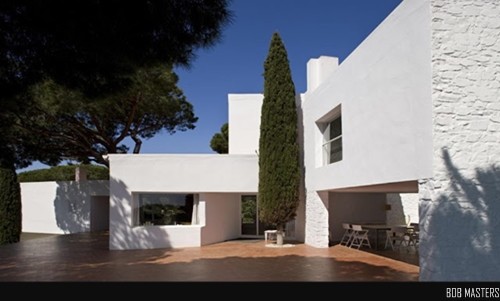
Figure 6. Casa Ugalde, José Antonio Coderch (Caldes d’Estrac, 1951)
The 1950s, then, were prolific years in the field of architecture in Spain. Over this decade, each architect would develop their own language setting off from the principles that the Modern Movement had been developing in Europe and America, principles that arrived in Spain just at the moment when the organic ideal began to take hold. This new architecture, however, did not develop into something that could represent a specific national identity mark or a movement that could encompass most Spanish architects. On the contrary, it was varied and eclectic, each architect developing his or her own style and identity, which clearly enriched the Spanish architecture of that period.
As a clear example of this fruitful development in architecture, and especially of the level achieved in such a short time, is the long list of awards and mentions that were won in this field over the 1950s. Coderch won the Grand Prix of the Milan Triennial in 1951 and three years later, in 1954, Ramón Vázquez Molezún was rewarded with the same prize. That same year, Miguel Fisac won the Gold Medal at the Religious Architecture Exhibition of Vienna. In 1957, the architects César Ortiz-Echagüe Rubio, Manuel Barbero Rebolledo and Rafael de la Joya Castro won the Reynolds award, an award designed to promote the use of aluminium in the field of architecture. That same year, Javier Carvajal and Jose María García de Paredes won the First Prize at the Milan Triennale again, and to end that list of awards won over that decade, in 1958 José Antonio Corrales and Ramón Vázquez Molezún were the prize-winners of the Golden Medal for the Spanish Pavilion at the Brussels International World Fair (Flores, 1961, p.207).
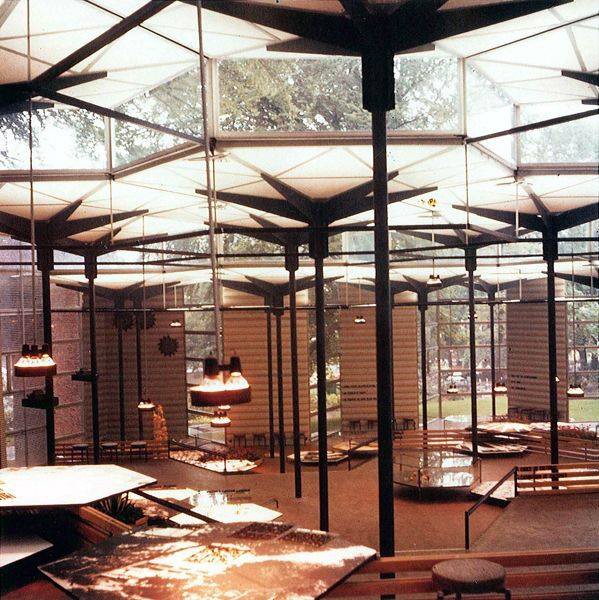
Figure 7. Pavilion for the Brussels World Fair, Corrales and Molezún (1957)
If the years immediately after the civil war were years of hardship and hunger in the economic and social spheres, the same cannot be said of the cultural sphere. In art, and architecture in particular, the post-war period brought out the best in Spanish architects. The economic hardship and international isolation created an extremely adverse situation, which paradoxically, led to notable achievements in architecture. One wonders, therefore, whether, if the 1940s had been years of plenty and development, Spanish architecture would have achieved the level that it did.
The end of the 1950s, however, bore witness to a crisis in the principles of the first generation Modern Movement. To that crisis, or crowning and pivotal moment, after which the ideas of the 1920s and ‘30s began to be questioned, must be added the economic recovery and development. The appearance of Saarinen’s TWA or Utzon’s Sydney Opera House marked the emergence of a different spirit that would promote the development of a more organic architecture with the clear influences of Alvar Aalto and Frank Lloyd Wright, as well as the later Le Corbusier. An organic architecture that, as Gillo Dorfles says, although questioning the rigid forms of the first Modern Movement, as well as the excessive standardization of the profession, was not against providing architecture with unity, even when its inspiration lay in the natural, organic or irregular.
(…) podemos estar de acuerdo con la arquitectura orgánica por su voluntad de repudio de las formas rígidas y mecánicas, por su desprecio de la excesiva “standardización” y por su adaptación a un formalismo que busca sus principios aun en el mundo orgánico, no lo estaremos jamás con su voluntad de ser irregular y con su no querer tener unidad ((…) we may agree with organic architecture because of its desire to repudiate rigid and mechanical forms, because of its disdain for excessive “standardization” and its adaptation to a formalism that seeks its principles in the organic world, but we will never agree with its willingness to be irregular and its dislike of unity). (DORFLES, 1957, p.82)
If the organic period in Spain began with Antonio Fernández Alba, who, in 1962, won the National award for his Convento de Rollo in Salamanca, the crowning moment and, at the same time, the end, not only of organic architecture, but also modern architecture in Spain, is represented by the Torres Blancas building(1962-1967) of Sáenz de Oíza. That building is considered to be the end of the quest for that modernity so much appreciated, desired and well-achieved by Spanish architects.
Figure 8. Torres Blancas building, Javier Sáenz de Oíza (Madrid, 1964-1968)
The end of the 1960s and the following decade were chaotic years architecturally speaking, both internationally and in Spain. In Spain, in particular, architecture entered into a capitalist process caused by the development of tourism and the fully recovered economy. Architecture from then on would be strongly conditioned by market expectations.
Conclusion
As we have seen, the fusion of industry, arts and crafts put down string roots in Germany, as that country, to a large extent, lacked a strong national identity. Likewise, in the Nordic countries, the Modern Movement initiated ten years earlier in central Europe, was able to freely develop from the 1930s for the same reason – a lack of a strong, influential architectural culture. In Spain, the third Modern Movement generation developed at a moment when a large section of society, especially the intellectuals, were faced with the cultural vacuum that the dictatorship had created. Spain was crying out for renewal and development. Open to change and new proposals, the architects of the time adopted and adapted the lessons of the first two generations of Modern Movement, so resulting, in a very short period of time, in a spectacular explosion of individual styles. Some were more rationalist, others more organic, but in their work, we always see the desire for a synthesis and further development of the European heritage mixed with the technical training of the Spanish architect, all of which provides the architecture of that time with a distinguishable seriousness.
As a result of this brief history of modern architecture, two outstanding points may be concluded. The first is that, although development and new ideas arise from extreme conditions or cultural vacuums, nothing arises out of nothing. In fact, the Modern Movement is a consequence of a historical moment, of a set of political, artistic and social circumstances that led to the emergence of a set of ideas in various locations at the same time.
(…) la arquitectura moderna, más que un fenómeno de influencias mutuas, es el resultado de unas exigencias culturales sentidas a la vez, y con intensidad, en países y en ambientes distintos ((…) modern architecture, rather than being a phenomenon of mutual influences, is the result of several cultural demands at the same time, and with intensity, in different countries and environments). (DORFLES, 1957, p.132)
The second conclusion is that, in that constant struggle between memory and oblivion that characterizes us as a civilization, we must be aware not only of the amount of history and cultural baggage that architecture conceals, but the fact that that inheritance is and can be shared, without frontiers, as the most recent legacy of architecture shows only too well.
If these two conclusions are taken into account, the task of deciding upon what is to be classified and preserved, especially when it comes to relatively recent buildings, may be undertaken more appropriately and with clearly defined criteria.
ILLUSTRATIONS
Image 1. San Francesco di Paola basilica, Naples, 1817-1824
https://www.google.com/search?q=san+francesco,+napoli&source=lnms&tbm=isch&sa=X&ved=0ahUKEwiK89qqk9DjAhVEExoKHXK_AowQ_AUIESgB&biw=1409&bih=897#imgrc=y8T4TfFAoiVh7M:
(Consulted 25/07/2019)
Image 2. Rincón de Goya building, García Mercadal, Zaragoza 1927
At: https://www.flickr.com/photos/zaragozaantigua/15487156048/in/photostream/
(Consulted 23/07/2019)
Image 3. Service station, Fernández-Shaw, Madrid 1927
https://i.pinimg.com/originals/60/e7/54/60e754a163d12427b9a6faf50eceb8b1.jpg
(Consulted 23/07/2019)
Image 4. Anti-tuberculosis Dispensary, Josep Lluís Sert, Barcelona 1934-1938
https://www.google.com/search?biw=1409&bih=846&tbm=isch&sa=1&ei=iik3XY3wBayPlwSWkIWwCw&q=dispensario+antituberculoso+sert&oq=DISPENSARIO+ANTI&gs_l=img.1.2.0l3j0i30l4j0i24l3.122676.124230..126789...0.0..1.341.1741.11j4j0j1......0....1..gws-wiz-img.......35i39j0i67j0i8i10i30j0i8i30.UtBLyFwx3fE#imgrc=PM0CDAQatPSPLM:
(Consulted 23/07/2019)
Image 5. Edificio Sindicatos, Cabrero y Aburto, Madrid 1949-1951
Elena Roig Cardona
Image 6. Casa Ugalde, José Antonio Coderch, Caldes d’Estrac 1951
http://joseantoniocoderch.org/wp-content/uploads/2015/02/ugalde_lateral_500x301RET.jpg
(Consulted 23/07/2019)
Image 7. Spanish Pavilion for Brussels World Fair, Corrales and Molezún, 1957
https://www.google.com/search?biw=1409&bih=797&tbm=isch&sa=1&ei=hy03Xf6ZEsGLlwSappMw&q=PABELL%C3%93N+DE+BRUSELAS+CORRALES+Y+MOLEZUN&oq=PABELL%C3%93N+DE+BRUSELAS+CORRALES+Y+MOLEZUN&gs_l=img.3...16705.21249..21451...0.0..0.105.3238.37j2......0....1..gws-wiz-img.......35i39j0i67j0j0i8i30j0i24.ygiuzJ4Vgdw&ved=0ahUKEwi--daTs8vjAhXBxYUKHRrTBAYQ4dUDCAY&uact=5#imgrc=F2Qdpcym4g0laM:
(Consulted 23/07/2019)
Image 8. Torres Blancas building, Sáenz de Oíza, Madrid 1964-1968
https://www.google.com/search?biw=1409&bih=797&tbm=isch&sa=1&ei=4Sw3XfH1IqmMlwTL24qIAg&q=edificio+torres+blancas+madrid&oq=EDIFICIO+TORRES+BLANCAS&gs_l=img.1.1.0l4j0i24l3.43778.49898..51627...4.0..0.128.2444.25j3......0....1..gws-wiz-img.......35i39j0i67j0i8i30.qf_FvlQCxJ0#imgdii=_VkGqEHrzmN1eM:&imgrc=BxdcuQvzdhsnRM:
(Consulted 23/07/2019)
BIBLIOGRAPHY
BENÉVOLO, Leonardo. Historia de la arquitectura moderna. Barcelona: Gustavo Gili, 1996
BLAT PIZARRO, Juan, (publication coordinator) Fernando Moreno Barberá arquitecto, exhibition catalogue, published by Colegio Territorial de Arquitectos de Valencia, 2006, Valencia
BLAT PIZARRO, Juan, Fernando Moreno Barberá. Modernidad y arquitectura
CAPITEL, Antón, Arquitectura española años 50 – años 80, MOPU Secretaría General Técnica Publications Centre , 1986, Madrid
DOMENECH GIRGAU, Luis. Arquitectura Española Contemporánea, Editorial Blume, 1968, Barcelona
DOMÉNECH, Lluís. La arquitectura de siempre. Los años 40 en España, Editorial Cuadernos Ínfimos 83, 1978, Barcelona
DORFLES, Gillo. Arquitectura Moderna, Editorial Seix Barral, S.A., 1957, Barcelona
DROSTE, Magdalena, Bauhaus 1919-1933. Berlín: Benadict Taschen, 1993
FLORES, Carlos. Arquitectura Española Contemporánea, Editorial Aguilar, 1961, Bilbao

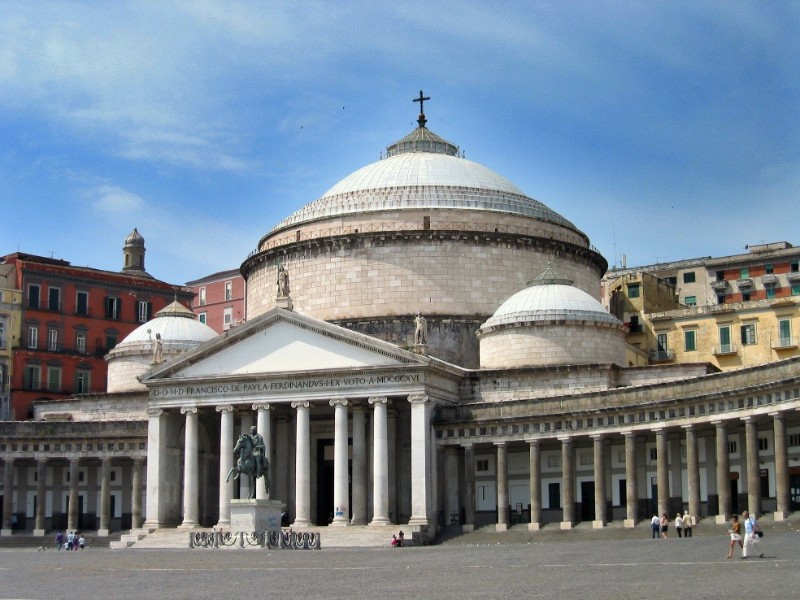
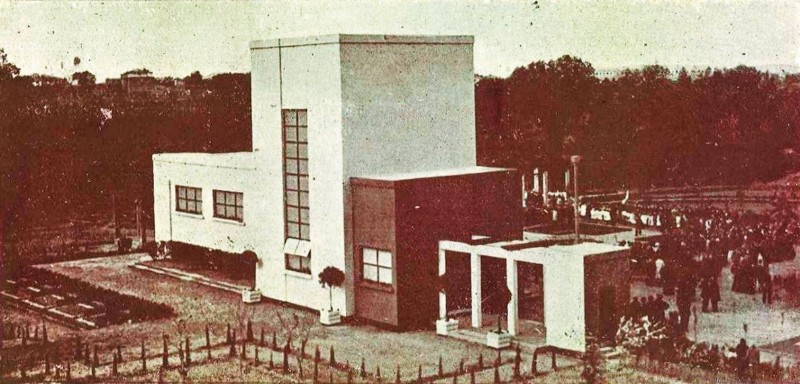
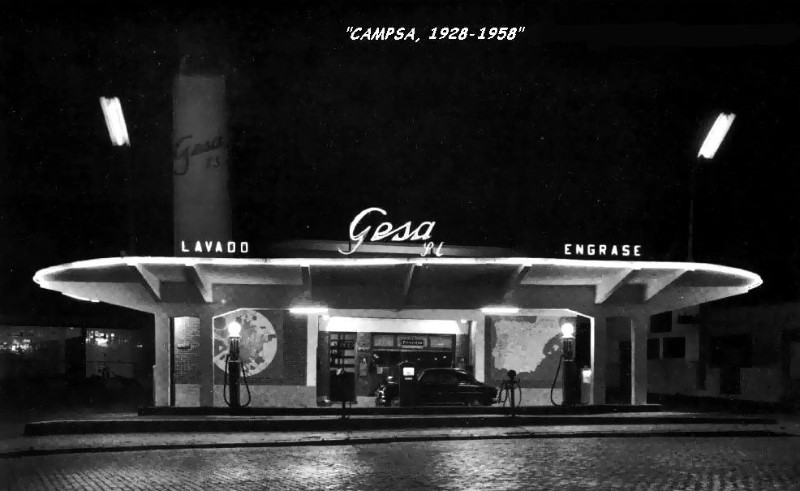
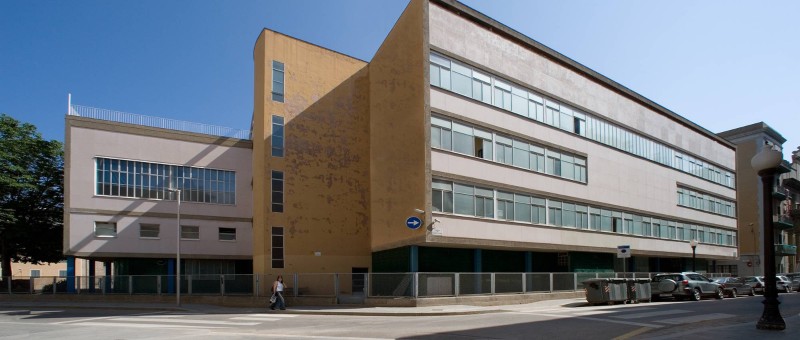
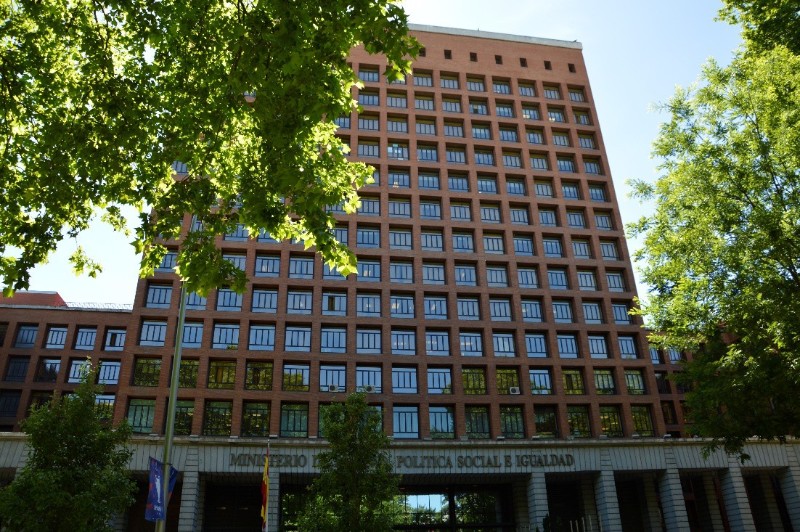
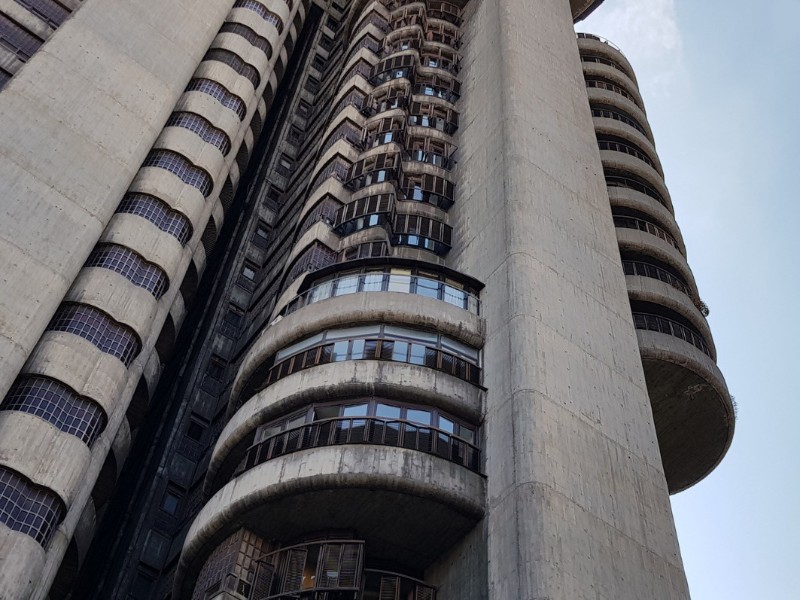
 Université Jean Monnet
Université Jean Monnet